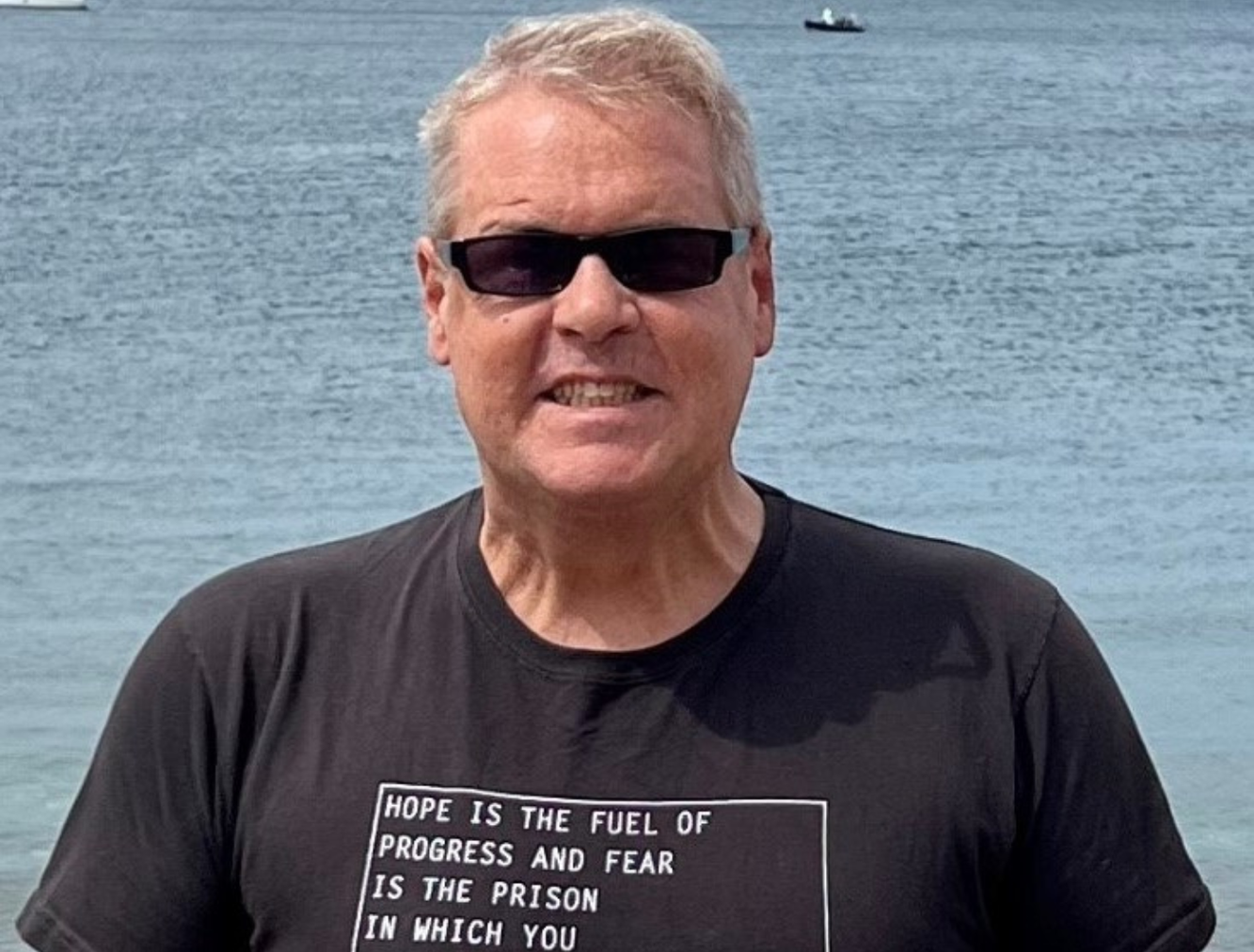Mark's Story
Mark was around 36 years old when his eyes suddenly became very sore, irritated, and inflamed. He put it down to a bout of conjunctivitis.
"Most people who get a bit of pink eye put some drops in from Boots, and within half a dozen days it’s gone. I still had it after many weeks."
At the time, in 2006, Mark had no idea that he had developed a rare eye disease that was about to change his life forever. With his symptoms getting no better, Mark went to his local eye hospital. In those first few weeks he saw four different consultants, all of whom told him that he had conjunctivitis.
"I went private for a second opinion and stumbled across a guy who was my absolute saviour. I walked in and within 20 seconds he said, “you have ocular pemphigoid.”"

Ocular Mucous Membrane Pemphigoid (OcMMP) is one of a group of autoimmune diseases that affect the skin and other mucous membranes of the body. In the eye, it causes chronic inflammation and progressive scarring of the conjunctiva - the clear membrane that covers the white of the eye and the inside of the eyelids. No eye drop or cream has yet been able to control the damaging scarring caused by OcMMP, which leads to blindness in one in five patients.
Six weeks after his symptoms had first appeared, now in severe pain and unable to keep his eyes open, Mark was admitted to Bristol Eye Hospital.
He spent the next six weeks there, being treated with antibiotics, steroids, and chemotherapy drugs, but nothing was able to stop the progression of Mark’s OcMMP. The corneal scarring caused his conjunctiva to shrink and his eyelashes to grow inwards. His eyelids began fusing to his eyes, requiring vast quantities of artificial lubricating drops.
"At this point I was in constant pain. I would only keep my eyes open when absolutely necessary, typically spending 22 hours a day asleep or sat in a chair. The sensation felt like there was sand in my eyes and at the extremes was like blinking over shards of broken glass."

The scarring thinned Mark’s cornea and after just a few months, his left eye developed a fungal infection and an ulcer that would not heal. His cornea perforated. To try saving the sight in his eye, Mark had back-to-back surgery - an operation to patch the hole, followed by a corneal graft. But the progression of his OcMMP caused the blood vessels in Mark’s donated cornea to proliferate and grow abnormally, leaving him permanently blind in his left eye.
The poor state of Mark’s cornea led to him being admitted to hospital repeatedly with ulcers, which required antibiotic drops given hourly for 96 hours, for them to heal. All the while, the sight in Mark’s right eye was deteriorating rapidly.
Because the inflammation and corneal scarring in OcMMP is caused by over-activity of the body’s immune system, Mark was prescribed immunosuppressants, which he has had to take ever since. In a further attempt to stop his chronic scarring, Mark was also given infusions of the chemotherapy drug, Rituximab. At the time, this was an experimental treatment, but it helped to slow the progression of Mark’s OcMMP, saving the sight in his right eye.
"I was once told that if faced with an impairment you have three choices; you let it define you, you let it destroy you, or you own it. For me, this meant learning everything I could about OcMMP, networking and finding others to learn from, and going for technology and all the apps and gadgets there are out there to help."
For the next four years, Mark was able to manage his condition with a combination of oral steroids and predsol eye drops - although the drops have since given him secondary glaucoma and early stage cataracts. He returned to his job in IT, aided by an astonishing regime of care management, which involved lubricating his eyes every two minutes during the working day, taking 8 paracetamol a day, and visiting A&E twice a week to have his ingrowing eyelashes epilated.

But the scarring, dryness, and ingrowing eyelashes, in conjunction with stem cell deficiency, were now causing blood vessels to proliferate in Mark’s right cornea. To slow their growth, Mark had injections in his eye. He also underwent a course of electrolysis to “zap” the root of individual eyelashes, but even after 17 operations the lashes kept replenishing.
Five sessions of cryotherapy followed to remove large areas of eyelashes, but by this point the vision in Mark’s right eye had become too poor to allow him to work.
Finally, after careful consultation, Mark underwent a six hour operation at Bristol Eye Hospital to reform his eyelids using tissue from his mouth. After 3 months' recovery, Mark was fitted for a scleral contact lens. Designed to cover the whole of the cornea, these gas-permeable lenses, which look a bit like a small saucer, can be filled with saline solution.
"Without it everything would be a complete blur. It sharpens things up a bit, but it also bathes my cornea and takes away that horrible sensation, which is great."
For nearly 10 years, Mark’s scleral lens, gave him enough vision to enable him to work part- time and, helped by his continuing regime of immunosuppressants, he enjoyed some respite from the worst of his symptoms. His company was very supportive, and did what it could to help with workplace modifications. But in 2019, Mark’s OcMMP came out of remission, requiring more chemotherapy. In 2021, he accepted an offer of redundancy.
Currently, Mark is trialling different fits of scleral lens, which are providing a little more comfort, and a little better vision in his right eye, although he still gets through 2 boxes of artificial tears a day, and visits A&E every few weeks to have his ingrowing eyelashes removed when the pain becomes unmanageable.
Despite everything that he has gone through, and everything he still faces, Mark is resolutely positive. Through his networking, Mark discovered PEM Friends, a group offering support and information for people with all types of Pemphigoid, Pemphigus, and their carers.

The Friends take a keen interest in the latest developments in research, and they recently lent their support to an application from Saaeha Rauz, Professor in Translational Ophthalmology at the University of Birmingham, who had approached Sight Research UK for funding.
Professor Rauz is working to develop a new therapy for OcMMP, exploring the potential of a drug that has already shown promising results in suppressing conjunctival scarring. She is also designing an innovative gel-based eye drop in which to “package” the drug. The gel thins on blinking, releasing a dose, and then forms a soft protective coating when the eyes are open. She hopes that this will enable the drug to stay in contact with the surface of the eye for longer than in conventional eye drops, allowing it to work much more effectively.
We are hugely proud to support Professor Rauz’s research, which offers real hope for people living with the impact of OcMMP. As Mark says,
"The fact that there might be a solution to directly target the eye scarring progression is incredibly exciting. OcMMP takes peoples sight and does it with the maximum pain. A drop that could be used immediately to limit or even stop it? I can only imagine how radically different my own life would be if it had been around 20 years ago”.

Mark enjoying a sunny day by the sea



